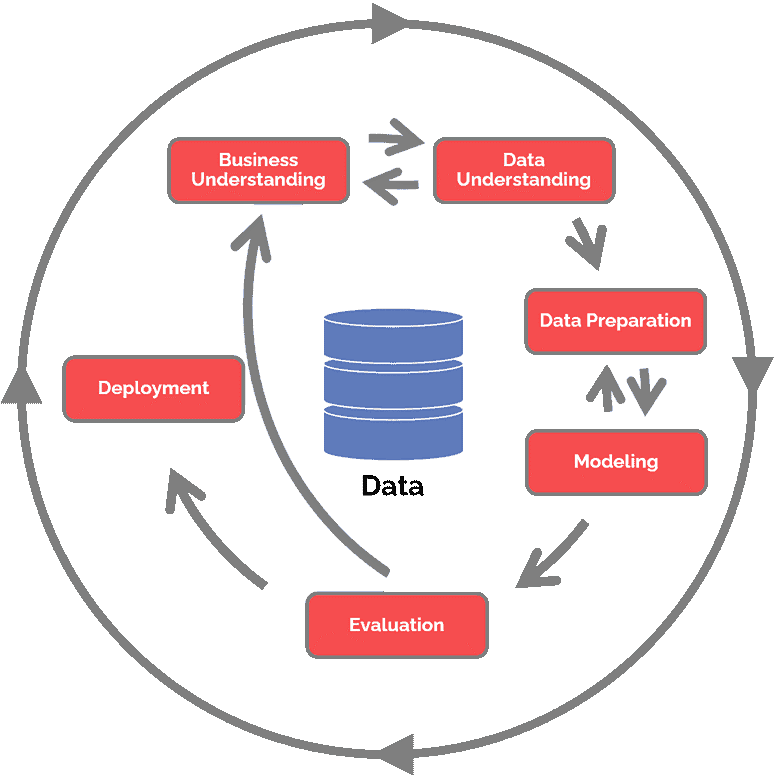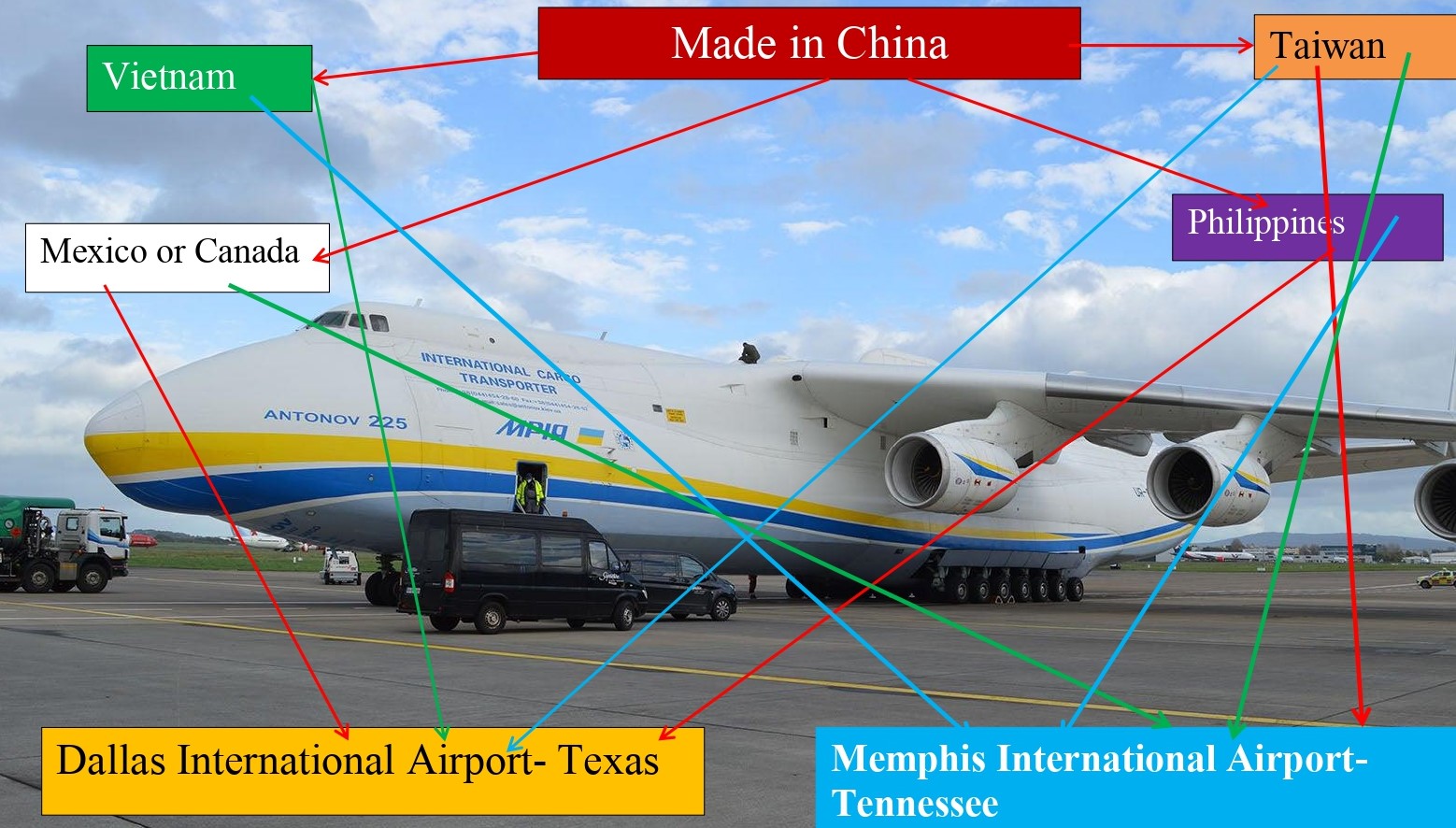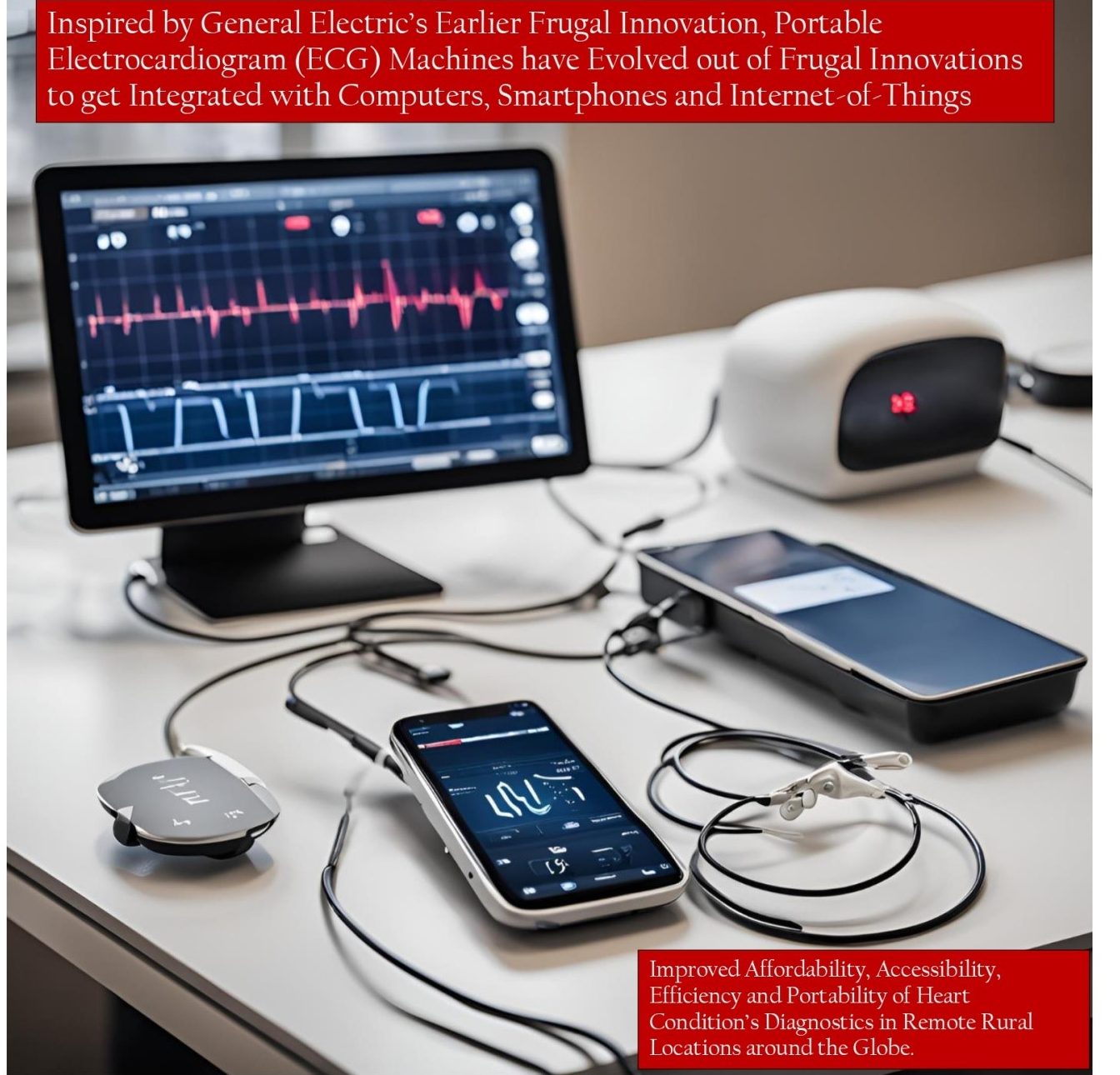By
Kazeem Twagobe
University of Liverpool, January 2025
INTRODUCTION
As most of the contemporary businesses are increasingly transitioning into data-driven worlds, it is not only business analytics in areas like process analytics or marketing analytics which are increasingly also becoming important for leveraging a firm’s competitiveness, but also advanced HR analytics (Kailash & Prathyusha, 2020). HR analytics is a strategic process of using different machine learning algorithms to gather and analyse critical data on areas like talent sourcing, recruitment, deployment and retention. It also examines how the existing work processes, policies and organisational practices create positive or even negative employee experience to undermine their effective performance (Wirges & Neyer, 2022).
Besides improving the efficacy of human resource recruitment process, HR analytics also offer critical insights that inform business executives’ decisions on the dissatisfiers that must be eliminated to bolster employees’ positive work experience, retention, job satisfaction, motivation and commitment. Quite often, coutcomes of such analysis spawn a firm’s improved competitiveness.
Reduction of high talent turnover rates inversely increases the stock of unique talents, skills, experiences and competencies that a business has at its disposal. In line with Barney’s (1991) “Resource-based Theory”, these often turn into idiosyncratic strategic value creating resources that bolster the sustainability of a firm’s competitive advantage.
Despite such interesting insights, questions as to how more advanced analytic models can be efficaciously used in the recruitment and retention of the most talented employees is contentious issue that most of the contemporary businesses are still grappling with (Pham, 2023;Nxtide, 2023). These are exacerbated by heightening competition among businesses for unique talents around the world. It is a nexus of such challenges that motivates this research paper to offer a critical analysis of the fundamental HR analytic models that are unfolding from the current advancement of the technologies of the fourth industrial revolution. Through such analysis, the study aims to inspire business executives to discern how such unfolding HR analytics can be optimized to leverage the efficacy of HR’s hiring and retention processes.
HR Analytics
HR analytics is a strategic process of gathering, analysing and interpreting different human resource or talent data using the required machine learning algorithms to generate insights that not only improve the HR’s hiring decision, but also decisions to improve remuneration, work process work condition, employee positive experience and motivation. HR analytics often generate insights that improve the accuracy of business executives’ data-driven decisions to attract, manage and retain most of their successful employees.
It is only in recent years that the notion of HR analytics turned into a buzzword as most business executives became fascinated with the usage of machine learning algorithms in HR analytics. But the notion of HR analytics has been in existence for as long as the concept of personnel management was invented during the heydays of Fredrick Taylor’s (1916) “Scientific Management Process”.
Using manual statistical processes, personnel management engaged in the analysis of the skills’ composition of the workforce to identify skill gaps that would inform new recruitment decisions. Personnel managers also evaluated the existing employees’ skills and competencies by assessing how they are able to easily achieve their daily, weekly and monthly targets to in turn enable a firm achieve its designated objectives and goals. Unlike the commonly used term of HR analytics, AIHR’s (2024) video below suggests such analysis is more people analytics than HR analytics which is more of a limited concept that may also limit the positive outcomes that the business can achieve out of analytics.
Besides statistical evaluation of the motivators explaining increment of employee retention rate or de-motivators instigating higher labour turnover rate, personal managers of the old days also engaged in manual statistical analysis of workforce diversity. This aided discerning whether the organisation was complying with relevant employee equity and diversity legislations.
As the integration of information technology usage became more prevalent as a business performance improvement initiative, usage of machine learning algorithms or artificial intelligence also emerged to gradually replace all the previous manually accomplished HR analytics. In terms of HR analytics, machine learning is a branch of artificial intelligence based on self-learning algorithms. These algorithms use different statistical modeling approaches to evaluate a huge amount of data as based on certain parameters to generate accurate relevant information with only minimal human intervention.
As algorithms are fed into the software powered by machine learning to analyse data, it generates certain data patterns to make predictions based on such data patterns. It transforms HR analytics by improving the speed of analysis to generate accurate, valuable and actionable data points. In turn, this improves the accuracy of HR decisions. Machine learning algorithms enable human resource managers extract and analyse enormous information on certain designated data parameters. If HR managers aim to identify the best talents for a particular job designation, algorithms that power the likes of LinkedIn’s machine learning generates and analyses the best potential candidates for that job. This improves the accuracy of HR’s selection decision.
Likewise if HR management is interested in analysing reasons for higher labour turnover, algorithms that power the likes of LinkedIn, Facebook and Instagram can generate specific information on the organisation’s workforce behaviours and thoughts outside work. This enables management identity dissatisfiers that it needs to work on to turn around the rising high labour turnover rate.
Just like any other organisational analytics, HR analytics can unfold according to four levels encompassing descriptive, diagnostic, predictive and prescriptive analysis (Kale et al., 2022). Descriptive analytics gather and analyse data that just offers insights on what is unfolding in the organisation. Diagnostic analytics evaluates the reasons why such events are unfolding. Predictive analytics evaluates existing data to discern the possible future scenarios that may arise if the situation is not addressed. Alternatively, it can also just focus on examining the efficacy of the improvement strategies that can be adopted to address the current undesired situation.
Prescriptive analytics that relies on the information generated by descriptive, diagnostic and predictive analytics evaluate the causes of the undesirable situation to offer insights on the best solutions that must be adopted(Kale et al., 2022). In such analytic processes, theories imply a combination of different machine learning methodologies have emerged for aiding effective contemporary HR analytics.
Machine Learning Methodologies for HR Analytics
There are several machine learning methodologies like Kanban, SEMMA, Scrum and KDD Process that have emerged for HR analytics. However, CRISP-DM (Cross Industry standard Process for Data Mining) is one of the most commonly used methodologies that have been adopt by most of the high performing businesses (Huber et al., 2017; Azevedo& Filipe, 2008; Hotz, 2023; IBM, 2023).
CRISP-DM
CRISP-DM aids effectiveness of data mining, analytics and data science projects. In its analytics process, CRISP-DM as reflected in Figure 1 often uses six sequential stages encompassing analysis and understanding business needs, designation of the required data’s parameters, data organising and preparation, modeling, evaluation and deployment (Hotz, 2023; IBM, 2023). Analysis and understanding business needs requires critical evaluation of the problematic human resource management areas that HR aims to perform relevant analytics to assess the magnitude of the problem and the solutions that must be adopted (Huber et al., 2017). It entails analysis of the wider organisational goals vis-à-vis the prevailing challenges, designation of HR analytics objectives and the kinds of required data. This enables HR undertake cost-benefit analysis to inform decision on the required HR analytics project plan, resources and technologies as well as risk and contingency plans that must be put in place to enable HR analytics project a success(Azevedo& Filipe, 2008).

Figure 1: Six Sequential Stages in CRISP-DM
Source: Hotz. N. (2023): IBM. (2023)
Designation of the required data’s parameters entails identification, gathering, analysing and interpreting the kinds of data which is required to enable HR analytics respond to the identified HR challenges and the overall organisational goals. It requires collection and loading of all the required historical and existing data into the analysis tool as well as describing data by evaluating its format, number of records and field identities (Hotz, 2023). Designation of the required data’s parameters also requires data exploration by digging deeper into data to query and visualize. This enables identification of the patterns of the relationships between data that offer insights into HR issues that the organisation seeks to resolve. Such a process integrates data quality verification by cleaning and eliminating unwanted data. This stage of HR analytics is followed by data organising and preparation stage.
Data organising and preparation stage is also known as “data munging”, which is the final preparation of data sets for modeling (IBM, 2023). It requires the accomplishment of five activities encompassing:
- Data selection
- Designation of data inclusion/exclusion reasons
- Data cleaning by using garbage-in-garbage-out principle to correct, impute and remove erroneous values
- Data construction using certain pre-designated attributes
- Data integration to generate new data sets by combining data from multiple sources
- Data formatting by converting string values with numbers to numeric values and aid effective mathematical analysis(Huber et al., 2017).
Once data organising and preparation are complete, modeling often commences by building and evaluating models derived from different modeling techniques like supervised, association and segmentation or clustering. Supervised modeling uses values of one or more input fields to predict one or more output/target fields’ values. It often applies techniques like decision trees such as C&R Tree, QUEST, CHAID and C5.0 algorithms (Azevedo & Filipe, 2008).
Supervised modeling also uses regression modeling techniques like linear, logistic generalized linear and Cox regression algorithms. Alternatively, it can instead use neural networks, Bayesian networks and support vector machines. Association models like sequence detection model establishes sequential patterns in time-structured data, Apriori and Carma models. It aids analysis of the complex sequence of the patterns of relationships between one or more entities such as events and increased or reduced purchases.
Segmentation/clustering models categorise data into segments or clusters depending on the similarities of input fields (Saltz & Shamshurin, 2016). Segmentation models like Kohonen networks, K-Means Clustering, anomaly detection and two-step clustering often just have the input fields and not the output/target fields.
However, with modeling algorithms selected, the modeling process proceeds to generate test design after splitting data into training, test and validation sets. Subsequently, a model is built and assessed for data scientists to evaluate the emerging models against each other so as to select the best model basing on domain knowledge, pre-designated success criteria and design test (Schroer et al., 2021). This requires usage of iterative model building process until data scientists reach the final logical conclusion that the selected model is the best.
Once the best model is selected, CRISP-DM’s evaluation stage still requires thorough evaluation and assessment of the selected model to discern whether it is the best model that meets HR analytics’ objectives and the pre-defined business success criteria (Wiemer et al., 2019).
Evaluation aims to discern whether any error has been committed during the modeling process that must be corrected through further iteration process or even initiation of new analytics project prior to the model’s deployment. Deployment is the final stage of analytics that deals with the reporting and utilisation of the adopted model to improve the identified areas of the business needing performance improvement (Krishnaswamy et al., 2022).
Model deployment must be based on a structured plan and accompanied with periodic monitoring and evaluation to aid identification and correction of any deviations that could be emerging from the deployment process. CRISP-DM is widely preferred because it is easily generalizable since most data analytic projects entail understanding the business, gathering, cleaning and analysing data and application of different data science algorithms to select the best models (Saltz & Shamshurin, 2016). Besides ease of usage of CRISP-DM’s iterative process, CRISP-DM also as contrasted with Kanban is more adoptable with minimal training and organisational role changes.
Because of its iterative process, CRISP-DM is also more flexible as it commences with the unknowns and iteratively navigates through the analysis to improve data scientist’s understanding of the data and the problem (Saltz & Shamshurin, 2016). However, CRISP-DM is criticized for being rigid, requiring heavy documentations, unsuitable for big data since it predates big data due to big data’s Four Vs (Volume, Velocity, Variety & Veracity).
CRISP-DM assumes that analytics is a single man or a small project initiative, yet in modern organisations, it may entail engagement in more complex analytic projects that renders effective activities’ coordination relatively difficult (Vorhies, 2016). Due to such limitations, some data scientists often prefer usage of SEMMA (Sample, Explore, Modify, Model & Assess).
SEMMA
SEMMA emerged from the acronym drawn from its five steps of sample, explore, modify, model and assess(Saltz et al., 2017). It is such five steps that SEMMA uses in its data mining and machine learning projects to evaluate and resolve a wider range of business problems. Such business problems may arise from challenges of customer retention and turnover, fraud evaluation, bankruptcy forecasting, database marketing, customer loyalty and market segmentation (Azevedo& Filipe, 2008).
Through such analysis, SEMMA has emerged to be critical for creating unique differential values that bolster a firm’s competitiveness and performance. SEMMA, while using sample as the first step of its five steps often commences by selecting a subset of dataset from the larger dataset provided for the model’s construction(Azevedo& Filipe, 2008).
As it identifies dependent and independent variables influencing the process, SEMMA sorts the gathered data into preparation and validation categories(Hotz, 2023). Sample stage is often followed by explore which is the process of using univariate and multivariate analysis to visualize and understand the intertwined relationships between data elements as well as to identify gaps in the data. Insights gained from the exploration stage informs decisions on how data must be cleaned, refined and transformed in the modify stage (Saltz et al., 2017). Model stage is the selection and application of the appropriate data mining technique to create a project model that offers coherent insights that respond to the defined problem and objectives of analytics (Hotz, 2023). Subsequently assessment is undertaken to test and evaluate its efficacy to produce the desired outcomes.
However, as contrasted with CRISP-DM, SEMMA uses a narrow data mining technical steps that exclude business analysis and understanding to only commence with the sampling stage. Since it does not consider deployment aspects, SEMMA cannot be construed as a more comprehensive analytics project management modeling methodology. Just like SEMMA, KDD (Knowledge Discovery in Database) also excludes business analysis and understanding as well as deployment in its stages to undertake a narrow approach to analytics projects (Saltz et al., 2017).
But still while using such narrow approach, KDD is a strategic analytic process of extracting patterns of information exhibiting new knowledge from large data sets using data mining and machine learning techniques, statistics and database systems. KDD uses five phases of analytics that encompass select, pre-processing, transformation, data mining and interpretation.
Due to its exclusion of business analysis and understanding as well as deployment stages, KDD was modified by Grady (2016) to introduce KDDS (Knowledge Discovery in Data Science). This expanded KDD and CRISP-DM efficacy to respond to big data related challenges (Azevedo& Filipe, 2008). As it also integrates aspects of process management, KDDS uses two phases of analytics with the first phase having four steps that encompass assess, architect, build and improve.
The second phase has five process stages that encompass plan, collect, curate, analyse and act. Irrespective of the machine learning methodology used, studies have confirmed HR analytics to significantly bolster the performance of the employees and subsequently the overall organisational performance.
HR Analytics And Organisational Performance
HR analytics improve the efficacy of the recruitment processes. For businesses receiving thousands of applications for emerging new vacancies, HR analytics reduces the overall cost of candidates’ evaluation and selection. It enables businesses gather and evaluate larger volumes of data on each candidate to easily sort out the potentially suitable candidates who must be subjected to further recruitment processes like aptitude testing and interviews.
For more extensive enterprises with recruitment cost peaking thousands or even millions of dollars per year, this significantly reduces the overall costs of human resource recruitment to create additional cost advantages that bolster a firm’s overall cost competitiveness.
Yet as HR analytics through the usage of different machine learning algorithms reduce the costs of human resource hiring, it also improves the efficacy of candidates’ evaluation and analysis. It enables HR managers to easily evaluate the kinds of skills, talents, experience, attitudes and behaviours that the business desires to acquire from each candidate. It is such improved efficacy that bolsters a business’ capabilities to hire only employees who fit with its organisational culture to spawn its overall efficacy to achieve its organisational goals. Such a view echoes insights from AIHR’s (2024) video below.
Some of the critics of HR analytics argue that HR analytics risks leaving out some very competent candidates due to its initial lack of face-to-face interactions with individual candidates. This affects accurate discerning of how individual employees interact and behave in realworld situations. But still an avalanche of studies has confirmed HR analytics through usage of different machine learning algorithms to aid tracking and analysis of the wider social media platforms and other online information. This enables not only accurate analysis and understanding of how each individual employee behaves in the professional world, but also in the out of work environment. Through such analytics, HR managers are able to easily understand the actual values and attributes that each potential candidate would offer to the organisation if hired. It enables HR managers diagnose whether the attributes and values that individual employees hold match the ones of the organisation to improve the overall level of goal congruence that often bolsters a firm’s overall effective performance.
HR analytics not only improves the quality of the organisational skills and competencies, but also the retention of the existing talents and skills. It enables accurate diagnosis of the organisational, management and employee related factors that are affecting performance to induce frustrations that cause employee high turnover.
Even if some of the businesses often do not act to respond to the issues identified during HR analytics, studies still highlight HR analytics to spotlight areas that management must address to reduce rising labour turnover rates. HR analytics enables management evaluate factors like dissatisfaction with remuneration package, interpersonal conflicts, discontent with work conditions, work stress and burnout that may be instigating higher labour turnover.
Likewise HR analytics also enables management discern the employees’ dissatisfaction with organisational factors like management and leadership style or discontentment with the general organisational policies and practices that may be instigating higher labour turnover. It is through such comprehensive in-depth analysis that management is often able to undertake the required necessary improvements to address the concerns of the employees.
This improves what Herzberg (1967) calls the hygiene factors or satisfiers and dis-satisfiers to catalyse the overall level of employees’ job satisfaction, motivation and commitment to achieve the desired organisational objectives and goals. Yet as HR analytics improves the rate of labour retention, it also increases the accumulation of the stock of unique skills, talents and experiences that a business has at its disposable.
In all businesses, employees are the sources of a firm’s competitive advantage since it is not only employees that do 90% of the organisation’s work, but it also the employees who are the inventors, innovators, machine operators, marketers, deal concluders, planners and implementers that determine how a business accomplishes its different activities to bolster its overall competitiveness. In line with Barney’s (1991) “Resource-based Theory”, this implies as HR analytics bolsters the retention of the best talents, it also leverages a firm’s capabilities to accumulate a stock of unique skills, talents and experience that leverages its sustainable competitiveness.
It is such stock of unique skills, talents and experience that turns into the strategic value creating resource that determines the uniqueness of how a business seamlessly combines it different resources to create and deliver the desired differential values. HR analytics enables a business gain accurate insights into its employees’ data in regard to demographics, performance status, skills, experience and qualifications, job history, assignments executed and goals achieved, as well as learning, training and career development. This enables management discern how to link poor performers with high performers to improve mentorship, career growth and performance. It also offers information for the evaluation of the diversity of the workforce composition to enable the business comply with government laws and regulations on employment equity and diversity.
Such critical information further enables management identify areas of common poor performance to discern training programmes that must be introduced to improve the employees’ competencies to perform more effectively in such areas. But even if this implies HR analytics improves human resource forecasting and planning, some studies still caution that HR analytics also have certain inherent limitations that must be mitigated if it is to induce the desired improvement on employee and organisational performance.
Limitations of HR Analytics
Failure or difficulty of adopting an organisational data-driven decision-making culture that effectively utilises HR data to inform important workforce decisions that improve the overall employee and organisational performance is one of the major limitations of HR analytics. Fear of the unknown and hefty cost of changes required for implementing data-driven decisions that respond to the issues emerging from the outcomes of HR analytics is a major impediment of HR analytics’ efficacy. Even if HR analytics often reveal important facts about organisational changes that are required to improve employees’ work process and performance, it is often not easy to implement such changes. Some business leaders often fear that making significant changes to respond to the issues identified from the outcomes of HR analytics may undermine the efficacy of the organisational work processes and policies that have been used for decades to bolster a firm’s overall effective performance.
In that regard, some business leaders are often just selective in applying changes necessitated by the outcomes of HR analytics. This signifies as much as HR analytics is used for identifying and responding to issues that undermine employee satisfaction, motivation and commitment to affect employee performance, sometimes, it may not due to the unwillingness of the organisational leaders to make the required costly changes. As reflected in Josh Bersin’s insights in the attached Unleash’s (2024) video, these challenges are often further complicated by confusion of whether it is HR or people analytics, data security management and privacy issues and the slow pace of HR analytics maturity level of operations
Besides such organisational inertia that often limits HR analytics’ efficacy, poor designation of HR metrics that must be measured using different HR analytic processes is also often a major challenge. Poor identification of HR metrics for measurement limits the business leaders’ capabilities to extract important data-driven insights to inform talent decisions, workforce process improvement and bolster employees’ positive work experience.
HR metrics’ identification issues often arise from over-emphasise of investment in HR analytics than data utilisation. Other challenges arise from poor alignment of HR metrics with the overall corporate strategy to inform important decisions on how HR analytics can be used to improve quality whilst also lowering costs to spur a firm’s overall competitiveness.
Due to multitudes of the required business metrics like financial, budget and performance metrics, in some cases, the accurate identification of HR metrics that must be focused on during HR analytics also becomes a challenge. This also affects the identification of the important HR metrics to periodically track with the effect that by the time problems arise, it often turns to be too late and costly to correct and reverse the unfolding damages. This is further complicated by the fact that poor data visualization that offers summarised insights to all relevant stakeholders is often a challenge. This undermines the accurate presentation of certain important facts to obtain all stakeholders’ buy-in for certain important changes’ implementation.
Yet as different machine learning algorithms have improved the efficacy of HR analytics to extract enormous information about individual employees, there is a challenge of balancing undertaking important HR analytics and protection of employee privacy and confidentiality. The implication is that some HR analytics that have been undertaken in good faith to improve employees’ performance have often instead turned into sources of dissatisfaction as employees discover that their privacy have been infringed during analytics.
Yet as employees raise privacy infringement issues, some businesses have ended up paying hefty fines for breach of data protection laws and regulations. To mitigate these privacy infringement issues, ethics for data analytics requires informing and seeking employees’ consent for private data usage, grounding data ethics in organisational culture, clarification of the intent and purpose of data analytics and continuous audit and improvement of data ethics policy to enhance adherence to data protection legislations and regulations.
As poor data ethics can induce hefty fines that increase a firm’s overall operational cost to undermine its cost competitiveness and operational profit margins, other challenges often arise from poor data quality management. Poor data quality management often affects the quality of HR analytics’ outcomes to undermine the quality of the decisions made basing on such outcomes.
To mitigate data quality issues, ABCD (Accuracy, Breadth, Consistency & Depth) requires the emphasis of accuracy, breadth, consistency and depth in all data analytic processes. Likewise other data quality measurement tools also emphasise the importance for upholding the principles of accuracy, completeness, consistency, freshness, validity and uniqueness as part of the critical data quality management dimensions.
Managerial Implications
As much as data analytics is widely integrated in the other aspects of business operations, most business executives are still reluctant to fully integrate analytics in HR related activities like predicting hiring and retention processes’ efficacy. It is such gaps in the existing epistemological trends and the pragmatic approaches adopted by the contemporary businesses that the outcomes of this study has attempted to solve. This renders this research significant for highlighting how HR analytics would bolster the efficacy of personnel hiring and retention to create better outcomes for the employees and the entire organisation.
The study also offers important analytic processes, concepts and practices that other businesses facing critical skills’ hiring and retention issues can emulate. This is attributable to the fact that through usage of CRISP-DM algorithms, a business can create machine learning models to predict certain future behaviours that impact performance, loyalty, and retention of its critical talents.
Understanding factors that may influence critical talents’ behaviours is very key to identifying predictor variables for the model. Many predictors can be gathered from social media, journals, books, web materials, anonymised staff records and historical data. Such insights render this study important for demonstrating how the creation and utilization of machine learning models can result in better staff hiring outcomes.
Such models can help to leverage the hiring process to be more adaptive and effective. A key approach here will be to adopt a good data management practice that beams light on how the models work to demonstrate HR Analytics value to the key decision makers.
Cite: Twagobe, K. (2025). HR Analytics: Driver of Superior Business Performance in the 41R Era. London: Cloud Analytika.
References
AIHR. (2024). What are the Benefits of People Analytics for Employees? Link: https://www.youtube.com/watch?v=alJxSeqb-1w
AIHR. (2024). Should we use HR Analytics or People Analytics? Link: https://www.youtube.com/watch?v=2VvLctbyzgQ
Anita.R., & Sumathi, N.(2019). A study on the measuring the factors of HR analytics on performances management in services sector of selected companies in Chennai.JAC: A Journal of Composition Theory, 12(12), 416-428.
Azevedo, A., & Filipe, S.M. (2008). KDD, Semma and CRISP-DM: A parallel overview. In Proceedings of the IADIS European Conference on Data Mining, Amsterdam, The Netherlands, 24–26 July 2008; pp. 182–185.
Cascio, W., & Boudreau, J. (2010) Investing in people. Upper Saddle River, NJ: FT Press.
Guest, D. (2001). Voices from the boardroom. London: Chartered Institute of Personnel and Development
Hotz, N. (2023). CRISP-DM-Life-Cycle. London: Data Science Process Alliance.
Huber, S., Lemme, G., Schwarzenberger, M., Wiemer, H., &Ihlenfeldt, S. (2017). Towards a methodology for assisted knowledge discovery in manufacturing. In Proceedings of the IEEE 15th International Conference on Industrial Informatics, Emden, Germany, 24–26 July 2017; pp. 835–840.
IBM.(2023). CRISP-DM Help Overview. New York: IBM.
Kailash, U., & Prathyusha, M. (2020).HR Analytics Methodical Measurement of HR Processes.International Journal of Innovative Science and Research Technology, 5(11), 52-88.
Kale, H., Aher, D., & Anute, N. (2022).HR Analytics and its Impact on Organizations Performance. International Journal of Research and Analytical Reviews (IJRAR), 9(3), 619-630.
Kearns, P. (2019). What do we mean by Human Capital Management? Management Decision, 62(13), 110-122.
Krishnaswamy, V., Singh, N., Sharma, M., Verma, N., & Verma, A. (2022). Application of CRISP-DM methodology for managing human-wildlife conflicts: an empirical case study in India. Journal of Environmental Planning and Management, 9(2), 128-141.
McCartney, S., & Na Fu, N. (2022).Bridging the gap: why, how and when HR analytics can impact organizational performance. Management Decision, 60(13), 119-128.
Nxtide. (2023). The Global Shortage of Software Developers and Its Serious Implication in the Coming Years. New York: NXTIDE.
Opatha, H.H.D.P.J. (2020). HR Analytics: A Literature Review and New Conceptual Model. International Journal of Scientific and Research Publications, 10(6), 98-102.
Pham, T. (2023). Analyzing The Software Engineer Shortage. New York: Forbes.
Raghunadha, R,P., & Keerthi, L.P. (2017). HR Analytics’ – An Effective Evidence Based HRM Tool. International Journal of Business and Management Invention, 6(7), 210-231.
Said, M., Khan, I., & Filza, H. (2021). The impact of performance management system on employees’ performance.International Journal of Business and Management Sciences, 02(7), 182-192.
Saltz, J.S., Shamshurin, I., & Crowston, K. (2017). Comparing Data Science Project Management Methodologies via a Controlled Experiment .Proceedings of the 50th Hawaii International Conference on System Sciences | 2017.
Saltz, S., & Shamshurin, I. (2016). Big data team process methodologies: A literature review and the identification of key factors for a project’s success. 2016 IEEE International Conference on Big Data (Big Data), Washington, DC, USA, 2016, pp. 2872-2879.
Sharma, A., & Tanuja, S. (2017). HR analytics and performance appraisal system: A conceptual framework for employee performance improvement. Management Research Review, 40(6), 309-322.
Schroer, C., Kruse, F., & Gomez, J.M. (2021).A Systematic Literature Review on Applying CRISP-DM Process Model.Procedia Computer Science, 18(1), 526-534.
Unleash. (2024). Josh Bersin: People Analytics is mission critical to a firm’s success. Link: https://www.youtube.com/watch?v=HbAfV94sCyc
Vorhies, W. (2016). CRISP-DM – a Standard Methodology to Ensure a Good Outcome. New York: Data Science Central.
Wiemer, H., Drowatzky, L., & Ihlenfeldt, S. (2019). Data Mining Methodology for Engineering Applications (DMME)—A Holistic Extension to the CRISP-DM Model.Applied Sciences. 2019; 9(12), 166-179.
Wirges, F., & Neyer, A. (2022).Towards a Process‑oriented Understanding of HR Analytics: Implementation and Application. Review of Management Science, 10(6), 98-102.











